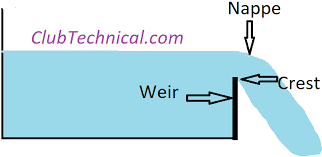Highway Maintenance
Highway Maintenance
Highway maintenance involves the practice of preserving the operational quality of existing roads to ensure smooth traffic flow. It holds a crucial significance in extending the lifespan of highways while also contributing to decreased fuel consumption by vehicles and the prevention of tire wear and tear.
Need for Highway Maintenance
- Guaranteeing the secure and comfortable conveyance of passengers and goods, uninterrupted.
- Regular road maintenance prevents accidents resulting from deteriorated and faulty road conditions.
- Ensuring safe and seamless traffic flow necessitates consistent road upkeep.
- Extending the longevity of roads through effective maintenance practices.
- Enhancing road user safety and curbing improper traffic movement.
- Regular maintenance of road components such as pavements, drains, shoulders, and edges yields superior service to road users.
Components of Road Maintenance
Road maintenance encompasses a variety of functions, each contributing to the overall upkeep and effectiveness of roadways:
Surface Maintenance:
- Maintaining the road's surface quality and structural integrity.
- Addressing various types of pavement distress, including alligator cracking, block cracking, transverse cracking, longitudinal cracking, raveling, drip track raveling, bleeding or flushing, corrugations, potholes, and ruts.
- Employing surface treatment methods like pre-mix carpet, patching, seal coating, oiling, re-mixing, and resurfacing.
Roadside and Highway Drainage Maintenance:
- Clearing and managing roadside areas by mowing, cutting, plowing, or spraying with weed killers.
- Preventing fire hazards through controlled burning and plowing.
- Improving visibility and sight distance by trimming vegetation.
- Managing side slope erosion through mulching, seeding, and stability checks.
- Ensuring proper functioning of ditches, culverts, and drainage structures.
Shoulder and Approaches Maintenance:
Maintaining sod shoulders through occasional leveling and keeping grass in good condition.
Addressing gravel and earth shoulders to avoid drop-offs at pavement edges.
Repairing edge joints and preventing water penetration to subgrade soil.
Snow and Ice Control:
Applying abrasives like sand, cinders, and stone screenings to improve traction on icy road surfaces.
Bridges Maintenance:
- Cleaning and repainting exposed steelwork.
- Resealing deck joints and addressing damage to guardrails.
- Resurfacing rough bridge decks.
- Correcting scour around piers and abutments.
Traffic Services:
- Performing striping and sign repair, especially after adverse weather conditions.
- Effective highway maintenance requires careful attention to all these components to ensure road safety, efficiency, and user satisfaction.
Types of Road Maintenance
Periodic and Routine Repairs:
- Routine repairs involve day-to-day maintenance activities aimed at keeping road pavements in good condition. These are mainly applied to low-cost roads.
- Departmental labor usually handles routine repairs, ensuring ongoing road functionality.
- Periodic repairs, on the other hand, are conducted at specific intervals and are typically contracted out to external contractors.
Special Repairs:
- Special repairs are dedicated to addressing significant and unique road problems that require specific solutions. These repairs are vital to prevent the worsening of road conditions.
- Primarily carried out on high-class roads, special repairs demand skilled labour due to their complex nature.
Resurfacing:
- Resurfacing involves renewing the surface dressing of a pavement that has suffered severe damage. This procedure is commonly performed on bituminous roads.
- Resurfacing aims to restore the road's structural integrity and functionality, ensuring safer and smoother travel conditions.
Maintenance of Cement Concrete Roads:
The maintenance of Cement Concrete roads involves the following steps:
Blown-Ups Repairs:
- Blown-ups are raised sections at transverse joints or cracks due to longitudinal expansion of the road slab.
- Repair involves removing 150 mm depth of pavement and replacing it with concrete or bituminous material patches.
Cracks Repairs:
- Wide cracks allow water and grit to penetrate, damaging the sub-grade.
- Immediate treatment is necessary for wide cracks, involving cleaning, kerosene coating, and sealing with molten compound during summers.
Joints Repair:
- Opened joints can let surface water reach the sub-grade, affecting the road's surface.
- Routine inspection and resealing of joints, removal of weak sealing compounds, and resealing with care are essential.
Patch Repair:
- Depressions or holes on the road surface are repaired with bituminous material or concrete patches.
- Deep depressions receive concrete patches, while shallow depressions are treated with bituminous patches.
Settlement Due to Mud Pumping Repair:
- Also known as sub-grade failure, it involves slab settlement due to cavities forming beneath.
- Repair consists of filling joints and cracks through mud-jacking, involving drilling, grouting with cement mix or bitumen, and sealing.
Surface Defects Repair:
- Repair surface disintegration caused by unsound aggregates in construction.
- Clean disintegrated areas and apply surface treatment like bitumen or concrete resealing.
Factors Affecting Highway Maintenance
- Traffic Volume: Higher traffic volumes lead to increased wear and tear on roads, necessitating more frequent maintenance.
- Climate and Weather Conditions: Harsh weather conditions like heavy rain, snow, and extreme temperatures accelerate road deterioration.
- Material Quality: Poor-quality construction materials lead to quicker degradation and require more frequent repairs.
- Design and Construction: Inadequate design or construction practices can result in premature road failure, requiring extensive repairs.
- Road Geometry: Improper alignment and steep grades can cause increased stress on roads, leading to faster deterioration.
- Drainage: Inadequate drainage can lead to water accumulation, erosion, and sub-grade damage, requiring maintenance.
- Environmental Factors: Proximity to saltwater, chemicals, or vegetation can affect road surfaces and require specialised maintenance.
- Heavy Vehicles: Frequent passage of heavy trucks or vehicles can accelerate road wear and necessitate stronger maintenance efforts.
- Budget and Funding: Insufficient funds can limit the scope and frequency of maintenance activities.
- Maintenance Practices: Proper maintenance techniques and schedules affect the overall condition and longevity of roads.
- Workforce Skill: Skilled labour is required for effective maintenance, and a lack of expertise can impact maintenance quality.
- Public Awareness: Lack of awareness about road maintenance can lead to delays in reporting issues and necessary repairs.
.jpeg)



Comments
Post a Comment